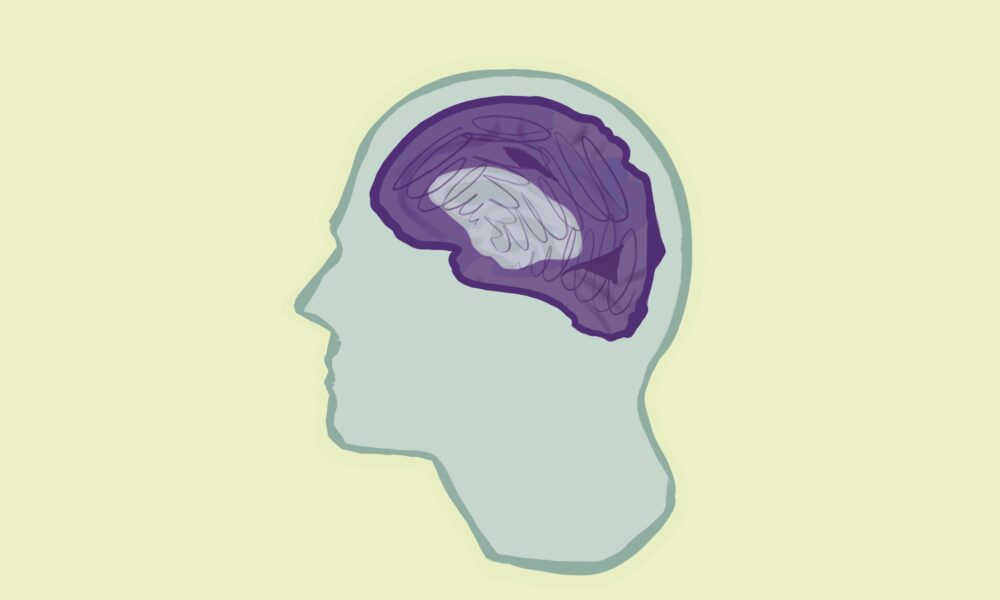According to the Alzheimer Society of Canada, an estimated one million people in Canada could be living with dementia by 2030. Dementia encompasses a range of symptoms associated with declining cognitive function; Alzheimer’s disease is the main form, accounting for 60 to 80 per cent of all cases. Although Alzheimer’s is closely associated with old age, the exact cause of the disease remains a mystery. However, two specific brain abnormalities have been used to characterize the disease since it was first described in 1906 by Dr. Alois Alzheimer: Amyloid plaques and tau neurofibrillary tangles. Although the impact of each anomaly has been studied individually, computational models are now being used to study the synergistic interactions between these two factors.
In a recent paper, Lázaro Sánchez-Rodríguez, PhD candidate in Neuroscience at the McGill NeuroPM Lab, and his colleagues studied how these plaques and tangles in the brains of Alzheimer’s patients interact with each other and impact disease progression.
Amyloid plaques are accumulations of amyloid beta proteins that are normally found in the brain, while tau neurofibrillary tangles are twisted protein fibres found in nerve cells.
“We know [Alzheimer’s] is characterized by these pathological depositions of amyloid beta and tau proteins that form in the brain,” Sánchez-Rodriguez said in an interview with The Tribune.
Sánchez-Rodriguez’s research focuses on how these two anomalies interact with each other to influence cognitive deterioration and memory loss. To do so, he uses computational models, as isolating these interactions in the brain to study them individually remains unachievable. These models can simulate certain aspects of brain chemistry and function by inputting mathematical models and equations into a computer program. Sánchez-Rodriguez and his colleagues also based the model on the brain chemistry of specific individuals by using real-world measurements as inputs for the program.
“[They’re] equations that you write in a programming language such as MATLAB […] that describe biophysical quantities that relate to processes in the brain,” Sánchez-Rodriguez explained. “When you put that together with the information we have from the participants in the cohort, you have a biophysical model that is created.”
Having the process simulated on a computer allows the tangles and plaques to be the only factors affecting brain activity in the models, whereas in nature, many factors are at play simultaneously.
Using this technique, Sánchez-Rodriguez found that the interaction between amyloid beta plaques and tau tangles directly correlates to the progressive damage of neurons in most Alzheimer’s patients and influences neuronal hyperexcitability—another factor associated with brain damage and memory loss. This strategy could help create new ways to diagnose early-onset Alzheimer’s.
“If you have a subject that doesn’t have Alzheimer’s yet but is showing signs of cognitive impairment and you see in [brain images] high levels of tau accumulations, then you could probably move that person up the queue where you’re trying to deliver a therapeutic intervention since it could predict that the person is going to develop Alzheimer’s very soon,” Sánchez-Rodriguez noted.
The results also highlight the impact of epigenetics—how behavioural and environmental influences affect the expression of genes—on the progression of Alzheimer’s disease. For instance, while amyloid beta plaques are typically directly related to the disease’s progression, there are people with high levels of amyloid beta in their brains who lack symptoms of the disease, Sánchez-Rodriguez explained. This suggests that while these plaques and tangles are a key part of the disease, various other pathophysiological factors unique to each individual are also at play.
This research continues to demystify Alzheimer’s disease by showing that tau tangles and amyloid beta plaques work in synergy as the disease progresses. More questions remain on how to apply findings like this as we face an emerging aging population who are at risk of developing dementia. Additionally, the study’s use of computational models is part of a new frontier in brain research. Computational models used in this research on Alzheimer’s disease are being expanded to study neuropathological mechanisms in general. One recently developed model is the Neuroinformatics for Personalized Medicine toolBox (NeuroPM-box), a software for advanced integration of molecular, histopathological, multimodal neuroimaging, and therapeutic data.






